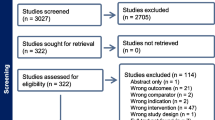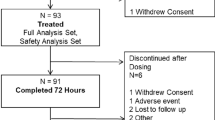Abstract
The recent development of ultrasound-guide nerve block has led to innovation in anesthesia and pain clinics. However, it has also led to some complex issues, including (1) how to name a new technique, (2) the appropriateness of an intramuscular approach, and (3) how to publicize a new technique. This review addresses naming strategy, feasibility of intramuscular approach block, and methods of publication. First, researchers and authors should pay attention to appropriate nomenclature for the term ‘approach’, ‘compartment block’, and ‘nerve block’ for a new block. Second, it is lack of evidences to facilitate muscle injection, and adequate preparation and adherence to proper technique for intramuscular approach block should be considered; confirmation of abnormal signs at the injection area, use of a thin needle and the lowest concentration and volume of local anesthetic without supplementation with steroid or epinephrine, compressing hemostasis, and sufficient interval of the blocks. Third, adequate dissemination of information would also be necessary through publication in appropriate media. We hope this review boost reasonable development of nerve block.
Similar content being viewed by others
References
Joshi G, Gandhi K, Shah N, Gadsden J, Corman SL. Peripheral nerve blocks in the management of postoperative pain: challenges and opportunities. J Clin Anesth. 2016;35:524–9.
Bhalla T, Sawardekar A, Dewhirst E, Jagannathan N, Tobias JD. Ultrasound-guided trunk and core blocks in infants and children. J Anesth. 2013;27:109–23.
Sondekoppam RV, Tsui BC. Factors associated with risk of neurologic complications after peripheral nerve blocks: a systematic review. Anesth Analg. 2017;124:645–60.
Clendenen SR, Riutort KT, Feinglass NG, Greengrass RA, Brull SJ. Real-time three-dimensional ultrasound for continuous interscalene brachial plexus blockade. J Anesth. 2009;23:466–8.
Sato M, Mikawa Y, Matuda A. Ultrasound and electrical nerve stimulation-guided S1 nerve root block. J Anesth. 2013;27:775–7.
Taketa Y, Fujitani T, Irisawa Y, Sudo S, Takaishi K. Ultrasound-guided thoracic paravertebral block by the paralaminar in-plane approach using a microconvex array transducer: methodological utility based on anatomical structures. J Anesth. 2017;31:271–7.
Yamauchi M, Kawaguchi R, Sugino S, Yamakage M, Honma E, Namiki A. Ultrasound-aided unilateral epidural block for single lower-extremity pain. J Anesth. 2009;23:605–8.
Behar M, Magora F, Olshwang D, Davidson JT. Epidural morphine in treatment of pain. Lancet. 1979;10:527–9.
Ma N, Duncan JK, Scarfe AJ, Schuhmann S, Cameron AL. Clinical safety and effectiveness of transversus abdominis plane (TAP) block in post-operative analgesia: a systematic review and meta-analysis. J Anesth. 2017;31:432–52.
Murouchi T, Yamakage M. Retrolaminar block: analgesic efficacy and safety evaluation. J Anesth. 2016;30:1003–7.
Joo YC, Park JY, Kim KH. Comparison of alcohol ablation with repeated thermal radiofrequency ablation in medial branch neurotomy for the treatment of recurrent thoracolumbar facet joint pain. J Anesth. 2013;27:390–5.
Kariya K, Usui Y, Higashi N, Nakamoto T, Shimbori H, Terada S, Takahashi H, Ueta H, Kitazawa Y, Sawanobori Y, Okuda Y, Matsuno K. Anatomical basis for simultaneous block of greater and third occipital nerves unilaterally, with an ultrasound-guided technique. J Anesth. 2018;32 https://doi.org/10.1007/s00540-017-2429-9.
Ip VH, Tsui BC. Lower interscalene approach for elbow surgery. Can J Anaesth. 2013;60:600–1.
Vilims BD, Wright RE. Supraclavicular approach to brachial plexus block using fluoroscopic anatomic landmarks and nerve stimulation. Pain Phys. 2003;6:191–4.
Vazin M, Jensen K, Kristensen DL, Hjort M, Tanggaard K, Karmakar MK, Bendtsen TF, Børglum J. Low-volume brachial plexus block providing surgical anesthesia for distal arm surgery comparing supraclavicular, infraclavicular, and axillary approach: a randomized observer blind trial. Biomed Res Int. 2016;2016:7094121.
Salem MH, Winckelmann J, Geiger P, Mehrkens H-H, Salem KH. Electrostimulation with or without ultrasound-guidance in interscalene brachial plexus block for shoulder surgery. J Anesth. 2012;26:610–3.
Meco BC, Ozcelik M, Oztuna DG, Armangil M, Guclu CY. Can we gain an advantage by combining distal median, radial and ulnar nerve blocks with supraclavicular block? A randomized controlled study. J Anesth. 2015;29:217–22.
Ozturk NK, Kavakli AS. Comparison of the coracoid and retroclavicular approaches for ultrasound-guided infraclavicular brachial plexus block. J Anesth. 2017;31:572–8.
Kii N, Yamauchi M, Takahashi K, Yamakage M, Wada T. Differential axillary nerve block for hand or forearm soft-tissue surgery. J Anesth. 2014;28:549–53.
Zhao X, Jiang N, Yuan F, Wang L, Yu B. The comparison of adductor canal block with femoral nerve block following total knee arthroplasty: a systematic review with meta-analysis. J Anesth. 2016;30:745–54.
Tsai PB, Karnwal A, Kakazu C, Tokhner V, Julka IS. Efficacy of an ultrasound-guided subsartorial approach to saphenous nerve block: a case series. Can J Anesth. 2010;57:683–8.
Karmakar MK, Kwok WH, Ho AM, Tsang K, Chui PT, Gin T. Ultrasound-guided sciatic nerve block: description of a new approach at the subgluteal space. Br J Anesth. 2007;98:390–5.
Yamamoto H, Sakura S, Wada M, Shido A. A prospective, randomized comparison between single- and multiple-injection techniques for ultrasound-guided subgluteal sciatic nerve block. Anesth Analg. 2014;119:1442–8.
López M, Calvo M, Sancho A, Brogly N, Guasch E, Gilsanz F. Effective volumes of 1.5% mepivacaine with different sodium concentration for ultrasound guided popliteal block. J Clin Anesth. 2017;37:139–44.
Soberón JR, McInnis C, Bland KS, Egger AL, Patterson ME, Elliott CE, Treuting RJ, Osteen K. Ultrasound-guided popliteal sciatic nerve blockade in the severely and morbidly obese: a prospective and randomized study. J Anesth. 2016;30:397–404.
Greenblatt DJ. Intramuscular injection of drugs. N Engl J Med. 1976;295:542–6.
Caplan A, Siegfried EC, Pariser DM, Rice KC, Trivedi M, Iles J, Collier DH, Kricorian G, Langley RG. Prevention and management of glucocorticoid-induced side effects: a comprehensive review: oar, cardiovascular, muscular, and psychiatric side effects and issues unique to pediatric patients. J Am Acad Dermatol. 2017;76:201–7.
Campbell RL, Bellolio MF, Knutson BD, Bellamkonda VR, Fedko MG, Nestler DM, Hess EP. Epinephrine in anaphylaxis: higher risk of cardiovascular complications and overdose after administration of intravenous bolus epinephrine compared with intramuscular epinephrine. J Allergy Clin Immunol Pract. 2015;3:76–80.
Ho K-Y, Tan K-H. Botulinum toxin A for myofascial trigger point injection: a qualitative systematic review. Euro J Pain. 2007;11:519–27.
Robbins MS, Kuruvilla D, Blumenfeld A, Charleston L 4th, Sorrell M, Robertson CE, Grosberg BM, Bender SD, Napchan U, Ashkenazi A. Trigger point injections for headache disorders: expert consensus methodology and narrative review. Headache. 2014;54:1441–59.
Abdi S, Cheng J. Complications of joint, tendon, and muscle injections. Tech Reg Anesth Pain Manag. 2007;11:141–7.
Benoit PW, Belt WD. Some effects of local anesthetic agents on skeletal muscle. Exp Neurol. 1972;34:264–78.
Zink W, Bohl JR, Hacke N, Sinner B, Martin E, Graf BM. The long term myotoxic effects of bupivacaine and ropivacaine after continuous peripheral nerve blocks. Anesth Analg. 2005;101:548–54.
Zink W, Seif C, Bohl JR, Hacke N, Braun PM, Sinner B, Martin E, Fink RH, Graf BM. The acute myotoxic effects of bupivacaine and ropivacaine after continuous peripheral nerve blockades. Anesth Analg. 2003;97:1173–9.
Hall-Craggs EC. Early ultrastructural changes in skeletal muscle exposed to the local anaesthetic bupivacaine (Marcaine). Br J Exp Pathol. 1980;61:139–49.
Benoit PW, Belt WD. Destruction and regeneration of skeletal muscle after treatment with a local anaesthetic, bupivacaine (Marcaine). J Anat. 1970;107(Pt 3):547–56.
Yagiela JA, Benoit PW, Fort NF. Mechanism of epinephrine enhancement of lidocaine-induced skeletal muscle necrosis. J Dent Res. 1982;61:686–90.
Karadas O, Gul HL, Inan LE. Lidocaine injection of pericranial myofascial trigger points in the treatment of frequent episodic tension-type headache. J Headache Pain. 2013;14:44.
Stundner O, Meissnitzer M, Brummett CM, Moser S, Forstner R, Koköfer A, Danninger T, Gerner P, Kirchmair L, Fritsch G. Comparison of tissue distribution, phrenic nerve involvement, and epidural spread in standard- vs low-volume ultrasound-guided interscalene plexus block using contrast magnetic resonance imaging: a randomized, controlled trial. Br J Anaesth. 2016;116:405–12.
Kaufman MR, Elkwood AI, Rose MI, Patel T, Ashinoff R, Fields R, Brown D. Surgical treatment of permanent diaphragm paralysis after interscalene nerve block for shoulder surgery. Anesthesiology. 2013;119:484–7.
Zink W, Graf BM. Local anesthetic myotoxicity. Reg Anesth Pain Med. 2004;29:333–40.
Vargas-Schaffer G, Nowakowsky M, Eghtesadi M, Cogan J. Ultrasound-guided trigger point injection for serratus anterior muscle pain syndrome: description of technique and case series. A&A Case Rep. 2015;5:99–102.
Braun RM, Shah KN, Rechnic M, Doehr S, Woods N. Quantitative assessment of scalene muscle block for the diagnosis of suspected thoracic outlet syndrome. J Hand Surg Am. 2015;40:2255–61.
Usui Y, Kobayashi T, Kakinuma H, Watanabe K, Kitajima T, Matsuno K. An anatomical basis for blocking of the deep cervical plexus and cervical sympathetic tract using an ultrasound-guided technique. Anesth Analg. 2010;110:964–8.
Scott NA, Guo B, Barton PM, Gerwin RD. Trigger point injections for chronic non-malignant musculoskeletal pain: a systematic review. Pain Med. 2009;10:54–69.
Finlayson RJ. Ultrasound guidance for trigger point injections: gold standard or fool’s gold? Reg Anesth Pain Med. 2017;42:279–80.
Masic I, Begic E. Biomedical scientific and professional social networks in the service of the development of modern Scientific Publishing. Acta Inform Med. 2016;24:409–12.
Hayanga AJ, Kaiser HE. Medical information on YouTube. JAMA. 2008;299:1424–6.
Br Rössle, Lahner D, Schebesta K, Chiari A, Plöchl W. Medical information on the Internet: quality assessment of lumbar puncture and neuroaxial block techniques on YouTube. Clin Neurol Neurosurg. 2012;114:655–8.
Instructions for authors. J Anesth. 2017;31: http://www.springer.com/medicine/anesthesiology/journal/540?detailsPage=pltci_2114920. 10 Dec 2017.
Resnik DB, Tyler AM, Black JR, Kissling G. Authorship policies of scientific journals. J Med Ethics. 2016;42:199–202.
Acknowledgements
I would like to thank Editage (www.editage.jp) for English language editing.
Author information
Authors and Affiliations
Corresponding author
About this article
Cite this article
Yamauchi, M., Sato, Y. Complex issues in new ultrasound-guided nerve blocks: how to name, where to inject, and how to publish. J Anesth 32, 283–287 (2018). https://doi.org/10.1007/s00540-018-2452-5
Received:
Accepted:
Published:
Issue Date:
DOI: https://doi.org/10.1007/s00540-018-2452-5




